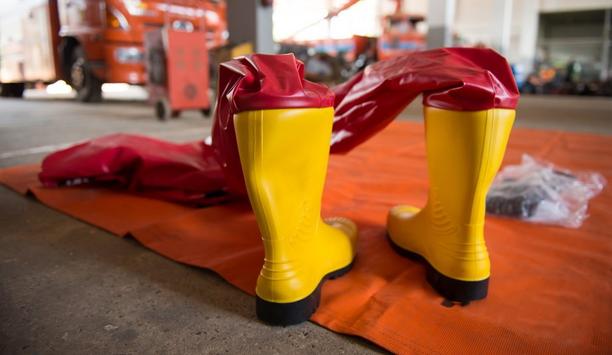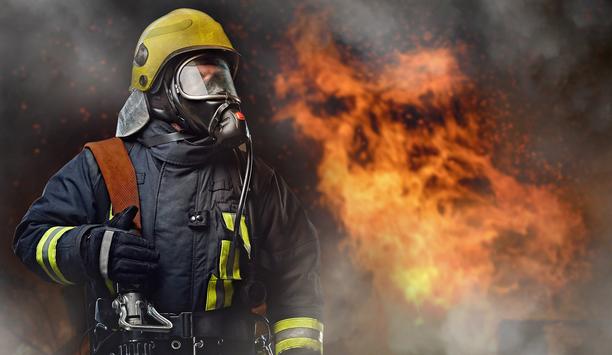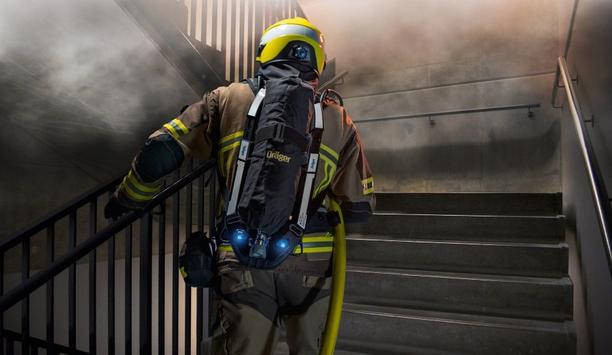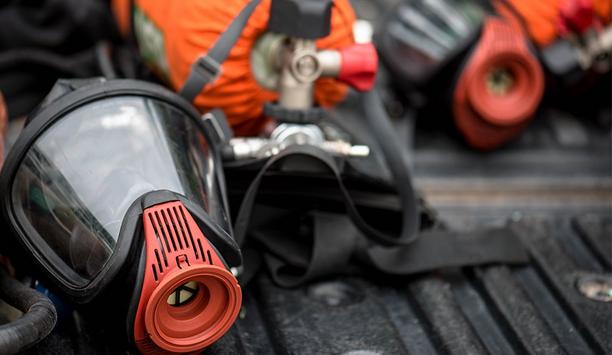 |
| The UL study reveals some of the most toxic gases and particulates harmful for the health of firefighters |
The study conducted multiple tests of three different types of fire scenarios, during which firefighters performed duties such as suppression and overhaul.
Underwriter's Laboratories, Inc. (UL) recently completed and published a 16-month study on the effects of smoke and gas exposure to firefighter health.
Funded by the Department of Homeland Security's Assistance to Firefighters Grant Program, and in collaboration with the Chicago (IL) Fire Department and the University of Cincinnati College of Medicine, the study conducted multiple tests of three different types of fire scenarios, during which firefighters performed duties such as suppression and overhaul, in order to accurately replicate the kinds of exposures that firefighters would regularly encounter during a fire. Data collected during the tests was examined by the University of Cincinnati College of Medicine to assess the potential adverse health effects of the observed gaseous effluents and smoke particles on fire service personnel.
The tests
Small-scale cone calorimeter tests were conducted first, to investigate the combustion products of forty-two commonly used residential building construction materials, residential room contents and furnishings, and automobile components under consistent, well-controlled radiant heating conditions. The results from these tests were used to assess the smoke contribution of a variety of individual natural, synthetic, and multi-component materials under fire conditions.
Next, nine full-scale fire tests representing individual room fires, an attic fire, two deck fires, and automobile fires were conducted at UL's large-scale fire test lab to study firefighter exposure during fire growth, suppression, and overhaul under controlled, reproducible laboratory conditions. During overhaul, firefighter personal atmospheres were sampled and analyzed for gases and smoke particles.
Toxic fumes and gases cause a fatal impact on the health of firefighters |
In addition to these tests, the Chicago Fire Department conducted personal gas monitoring at residential fires during knock-down, ventilation, and overhaul over the course of four months. Personal protective equipment components, such as gloves and hoods used by the firefighters during this time period, were analyzed to identify the chemical composition of accumulated smoke residue.
Why it's important
The results will provide a valuable background for interpreting fire hazards, which can then be used by:
- The medical community to advance their understanding of the epidemiological effects of smoke exposure
- First responders to develop situational assessment guidelines for Self-Contained Breathing Apparatus (SCBA) usage, personal protection equipment cleaning regimen, and the importance of personal hygiene following fire effluent exposure
- Organizations such as National Institute of Occupational Safety and Health (NIOSH) and National Fire Protection Agency (NFPA) to develop new test method standards and performance criteria for respirators used by first responders, and for the care and maintenance of personal protection equipment
The results
The tests found that during the course of a fire, firefighters face prolonged exposure to a number of hazardous gases and other harmful agents found in smoke, including but not limited to:
- Asphyxiants (such as carbon monoxide, carbon dioxide, and hydrogen sulfide)
- Irritants (such as ammonia, hydrogen chloride, particulates, and sulfur dioxide)
- Allergens (such as isocyanates, one of the main ingredients in polyurethane foam, also commonly found in pesticides)
- Carcinogens (cancer-causing agents, such as asbestos, arsenic, mercury, and lead)
Smoke particles can cause cancer and other cardiovascular diseases |
Smoke particles in the ultrafine range (particles less than 0.1 micron in diameter) are especially dangerous because they put firefighters at higher risk of specific cancers and cardiovascular disease. In fact, increases in firefighter mortality and morbidity have been directly linked to exposure to these types of gaseous and particulate agents.
The study also found that some gaseous effluents might also condense on protective equipment and exposed skin, leaving an oily residue or film. These chemicals can directly threaten firefighter health by being absorbed into the skin or eyes, or by inhalation. This valuable newfound information fills knowledge gaps identified in previous studies on firefighter exposure to combustion products.
Why you should wear your SCBA
The health implications are undeniable. Multiple asphyxiants, irritants, allergens, and carcinogens were found in smoke during both suppression and overhaul phases. Additionally, carcinogenic chemicals may act topically, following inhalation, or following absorption through the skin, including from contaminated gear. Exposure to particulate matter leads to increased cardiovascular morbidity and mortality, and long-term repeated exposure may accelerate cardiovascular mortality, and lead to cardiovascular diseases and chronic respiratory disease. Not to mention that interactions between individual exposures to these agents could lead to additive or synergistic effects, exacerbating adverse health effects.
These implications are especially significant because during the field tests, firefighters repeatedly exceeded the time and concentration limits of overexposure to toxic gases and other hazards.
In particular, more than 99% of smoke particles collected during overhaul were less than 1 micron in diameter (which, as previously mentioned, are of greater concern to firefighter health). Of these, more than 97% were too small to be visible by the naked eye, suggesting that "clean" air was not really that clean. This means that firefighters significantly increase the risk of exposure to harmful agents if they choose not to wear SCBA during overhaul.
The full report can be found at this link.





